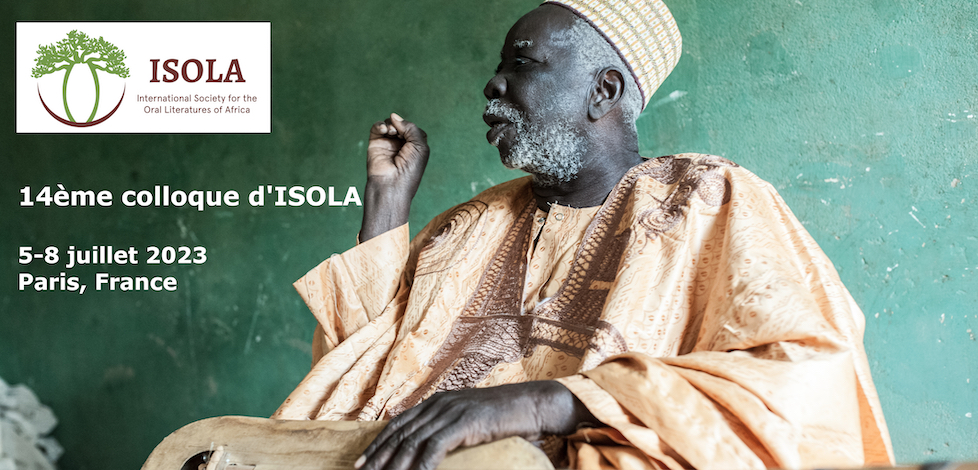Lors de déambulations dans les rues ou de représentations mêlant chants, mouvements dansés et interactions enjouées, des bouffons rituels kɔrɔdugaw du Mali portent systématiquement un collier de fèves rouges, auxquels ils ajoutent divers éléments pris dans leur environnement, dont des coquilles appelées kotԑ. L'un d'eux chevauchera également un cheval en bois sur les rythmes du chant et des percussions qui accompagneront ses mouvements.
Les diverses matérialités portées participent à qualifier les kɔrɔdugaw et leurs pouvoirs-faire par leurs proximités avec le monde vivant humain et non humain. Ils donnent dans le même temps une signification particulière à cette relation dans les chants et commentaires. La performance chantée du cheval et de son cavalier juxtapose ainsi la relation de pouvoir militaire associée au cavalier à une maîtrise incertaine d'un animal potentiellement incontrôlable. Un commentaire sur la coquille qui orne leur collier, s'inscrit comme bien d'autres dans un jeu de paronymie qui multiple les références et les glissements pour qualifier la présence et les pouvoirs bouffons en jouant sur la sonorité des noms des matériaux portés créant des images et imaginaires dans lesquels les kɔrɔdugaw seront intégrés.
À partir d'une analyse de performances et de discours, cette communication portera sur l'expression simultanée de la maîtrise et de la soumission au monde vivant par des acteurs réputés pour rendre ces éléments favorables au monde humain (en faisant venir la pluie quand celle-ci tarde à venir par exemple) autant que par l'incertitude qu'ils produisent dans la société. Elle analysera les effets de proximité des mondes vivants, humain et non humain, mis en présence et en relation, qui se substituent à une relation de maîtrise directe sur le monde mais qui en garde néanmoins certains effets.
Laure Carbonnel est docteur en anthropologie, elle mène des recherches sur les rassemblements festifs, maliens et panafricains en particulier, depuis 2006. Elle suit différents acteurs culturels — bouffons/clowns, entrepreneurs, DJ — dans leurs pratiques et circulations, pour interroger la régulation morale et émotionnelle des conduites, la production de collectifs, la création et le partage de formes de vie. Ses recherches s'inscrivent dans une écologie sociale fondée sur l'analyse située des interactions et des mouvements (dansés, gestuels, de personnes). Site : https://cv.archives-ouvertes.fr/laure-carbonnel
“The horse has no bit” and other narratives: staging the uncertainty of relations between humans and non-humans in ritual clowns' performances in Mali
Ritual clowns( kɔrɔdugaw ) from Mali walk through neighborhoods singing, dancing, interacting joyfully with inhabitants. They are easily recognized as they systematically wear a necklace of red beans, to which they add various elements taken from their surroundings, including shells called kotԑ. One of the kɔrɔdugaw will also ride a wooden horse to the rhythm of the singing and percussion that accompanies his movements.
The various materials worn by the clowns help to qualify the kɔrɔdugaw and their powers through their proximity to the living human and non-human world. Particular meaning is also given to this relationship in the songs and commentaries. The sung performance about the horse and rider juxtaposes the military power associated with the horseman with the uncertainty of controlling a potentially wild animal. A commentary on the shell that adorns their necklace qualify the presence and powers of the clowns playing on the similarity of sonority of the words and their different referents as we will see.
Based on an analysis of performances and speech, this paper will look at the simultaneous expression of dominance and submission to the living world by actors who are reputed to make these elements favourable to the human world (by making the rain come when it is slow in coming, for example) as much as by the uncertainty they produce in society. I will analyse the effects of the proximity of living worlds, human and non-human, brought together and put in relations by the clowns.
Laure Carbonnel is a Doctor of Anthropology. Sha has been researching dance gatherings, particularly in Mali and Ghana, since 2006. She follows different cultural actors - clowns, cultural entrepreneurs, DJs - in their practices and circulations, to question the moral and emotional regulation of behaviour, the production of collectives, and the creation of forms of life. Her research is part of a social ecology based on the situated analysis of interactions and movements (dances, gestures, people). Website: https://cv.archives-ouvertes.fr/laure-carbonnel

 PDF version
PDF version
